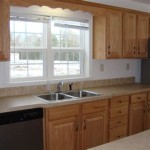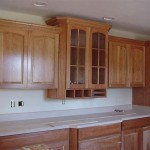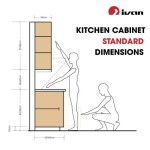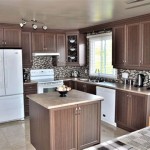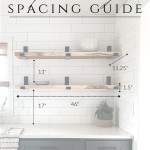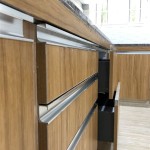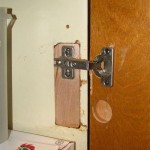Base Molding Kitchen Cabinets: Elevating Design and Functionality
Base molding, often overlooked amid the grandeur of kitchen design, plays a pivotal role in completing the aesthetic and protecting the structural integrity of kitchen cabinets. This trim, installed at the base where the cabinets meet the floor, serves a function that extends far beyond mere decoration. Understanding the types, benefits, and installation nuances of base molding is crucial for homeowners and design professionals striving for a polished and durable kitchen space.
The purpose of base molding in a kitchen setting is multifaceted. First, it conceals the unavoidable gap between the cabinet's base and the often-uneven flooring. This gap, resulting from variations in floor level or minor cabinet installation imperfections, can be an eyesore and a potential collection point for dirt and debris. Base molding neatly covers this area, creating a seamless transition and contributing to a cleaner, more finished look. Second, it protects the bottom edge of the cabinets from moisture, spills, and impacts. Kitchen floors are notoriously prone to occasional flooding or minor water damage; base molding acts as a barrier, preventing water from seeping into the cabinet structure and causing swelling, warping, or even mold growth. Finally, while practical, base molding also adds a decorative element. The style, material, and finish of the molding can be selected to complement the overall kitchen design, enhancing its aesthetic appeal and creating a cohesive look.
Types of Base Molding for Kitchen Cabinets
The selection of base molding hinges on several factors, including budget, desired aesthetic, existing kitchen style, and the material of the cabinets. There are several common types, each with specific characteristics and applications:
Wood Base Molding: Wood is the classic choice for base molding, prized for its versatility and natural beauty. It can be crafted from various wood species, including pine, oak, maple, and poplar. Pine is a cost-effective option, often pre-primed and ready for painting. Oak and maple offer greater durability and a more refined appearance, suitable for staining or painting. Wood base molding can be easily shaped and detailed, allowing for a wide range of profiles and styles. However, wood is susceptible to moisture damage and should be properly sealed and finished, especially in a kitchen environment. It also requires more maintenance than other materials, particularly in high-traffic areas.
Medium-Density Fiberboard (MDF) Base Molding: MDF is an engineered wood product made from compressed wood fibers and resin. It is a dimensionally stable and cost-effective alternative to solid wood. MDF is resistant to warping and cracking, making it a good choice for areas with fluctuating humidity. It is also readily available pre-primed, simplifying the painting process. While MDF offers good dimensional stability, it is not as water-resistant as some other materials and should be well-sealed, particularly at the bottom edge where it meets the floor. It is also less durable than solid wood and can be more prone to damage from impacts.
Polyurethane Base Molding: Polyurethane molding is a synthetic material that mimics the look of wood but offers superior moisture resistance. It is impervious to water, making it an excellent choice for kitchens where spills and splashes are common. Polyurethane molding is also lightweight, easy to install, and resistant to insects and rot. It can be painted or stained to match the cabinets and décor. The primary disadvantage of polyurethane is its higher cost compared to wood or MDF. It may also not have the same natural warmth and texture as real wood.
PVC Base Molding: PVC (polyvinyl chloride) molding is another synthetic option known for its durability and water resistance. It is completely waterproof, making it ideal for kitchens and other moisture-prone areas. PVC molding is also resistant to insects, rot, and mildew. It is available in a variety of profiles and colors, and it can be painted. PVC molding is typically more expensive than MDF but less expensive than polyurethane. Its plastic appearance might not be suitable for all kitchen styles, particularly those aiming for a traditional or rustic aesthetic.
The choice of base molding material also depends on the type of flooring. For example, with tile or stone floors, which are inherently water-resistant, solid wood or MDF might be suitable options provided they are properly sealed. However, for laminate or wood floors, which are more susceptible to water damage, polyurethane or PVC base molding might be more appropriate choices.
Key Considerations When Choosing Base Molding
Selecting the right base molding requires careful consideration of several factors. The ultimate goal is to choose a molding type that complements the kitchen's design, provides adequate protection, and fits within the homeowner's budget.
Style and Profile: Base molding profiles are available in a wide range of styles, from simple and understated to ornate and decorative. The chosen profile should complement the overall style of the kitchen cabinets and the existing architectural details. For example, in a modern kitchen with sleek, minimalist cabinets, a simple, flat base molding might be the best choice. In a more traditional kitchen with raised-panel cabinets and decorative hardware, a more elaborate base molding with curves and details might be more appropriate. Common base molding profiles include square, rounded, ogee, and cove. The height of the molding should also be considered in relation to the cabinet height and the overall proportions of the room. Too-short molding can look insignificant, while too-tall molding can overwhelm the space.
Material and Durability: The material of the base molding should be chosen based on the kitchen's environment and the homeowner's tolerance for maintenance. As previously discussed, wood offers a classic look but requires more maintenance and is susceptible to moisture damage. MDF is a cost-effective alternative that is dimensionally stable but less water-resistant than synthetic options. Polyurethane and PVC offer superior moisture resistance and durability but might not have the same aesthetic appeal as wood. In high-traffic kitchens or those prone to spills, a more durable and water-resistant material is recommended.
Finish and Color: The finish of the base molding should complement the cabinets and the overall kitchen color scheme. Base molding can be painted, stained, or left unfinished, depending on the material and the desired look. Painted base molding provides a clean, uniform appearance and allows for easy color coordination. Stained base molding highlights the natural grain of the wood and adds warmth and character. If the cabinets are painted, the base molding can be painted the same color for a seamless look or a contrasting color for a more dramatic effect. If the cabinets are stained, the base molding can be stained to match or complement the cabinet stain. The finish should also be durable and easy to clean, as base molding is often exposed to dirt and grime.
Installation Techniques and Best Practices
Proper installation is crucial for base molding to effectively fulfill its aesthetic and protective functions. Regardless of the material chosen, meticulous attention to detail is required for a professional and long-lasting result. Incorrect installation can lead to unsightly gaps, potential moisture intrusion, and premature wear.
Preparation: Before beginning the installation, the work area must be thoroughly prepared. This includes cleaning the floor and the base of the cabinets to remove any dirt, dust, or debris. Uneven floors should be addressed by shimming the cabinets during installation or by using flexible caulk to fill any gaps between the molding and the floor. It is also essential to gather all necessary tools and materials, including a miter saw, measuring tape, level, nail gun or hammer, construction adhesive, caulk, and paint or stain.
Cutting and Fitting: Precise cutting is essential for creating seamless joints and a professional finish. A miter saw is the best tool for making accurate angle cuts, particularly for corners. Inside corners require coping, a technique that involves cutting away the back of one piece of molding to create a tight fit against the other piece. Careful measuring and test-fitting are crucial before permanently attaching the molding. It is often helpful to create a template or practice cut before cutting the actual molding pieces.
Attachment: Base molding can be attached using a combination of construction adhesive and nails. Construction adhesive provides a strong bond between the molding and the cabinet base, while nails hold the molding in place while the adhesive cures. A nail gun is the most efficient tool for driving nails, but a hammer can also be used. When using a hammer, it is important to use a nail set to drive the nails below the surface of the molding to avoid damaging the finish. The nails should be spaced evenly along the length of the molding, typically every 12 to 16 inches. For MDF and polyurethane molding, it is important to use nails that are compatible with the material to avoid splitting or cracking.
Finishing: Once the base molding is installed, it needs to be finished to complete the look. This includes filling any nail holes with wood filler or spackle, sanding the filler smooth, and applying caulk to any gaps between the molding and the floor or cabinets. The caulk should be paintable and applied smoothly for a seamless finish. After the caulk has dried, the molding can be painted or stained to match the cabinets. Multiple coats of paint or stain are recommended for durability and a uniform finish. A clear coat of sealant can be applied to protect the finish from moisture and wear.
Base molding, therefore, is an integral component of kitchen cabinet design, enhancing both the aesthetics and functionality of the space. By carefully considering the various types of molding, key design considerations, and installation techniques, homeowners and design professionals can achieve a polished and durable kitchen that stands the test of time.

Base Moulding Traditional Living Baseboard Styles

What Is Furniture Base Molding For Cabinets And How To Use It

Pin On Kitchen

How To Add Molding Cabinets For A Gorgeous Finish Inspiration Moms

Adding Molding To Cabinets Make Them Look Built In Young House Love

How To Add Molding Cabinets For A Gorgeous Finish Inspiration Moms

Adding Molding To Cabinets Make Them Look Built In Young House Love

10 Types Of Kitchen Cabinet Molding For Your Home

How To Add Molding Cabinets For A Gorgeous Finish Inspiration Moms

Baseboard Moulding Embellishments Diamond Cabinetry
Related Posts

